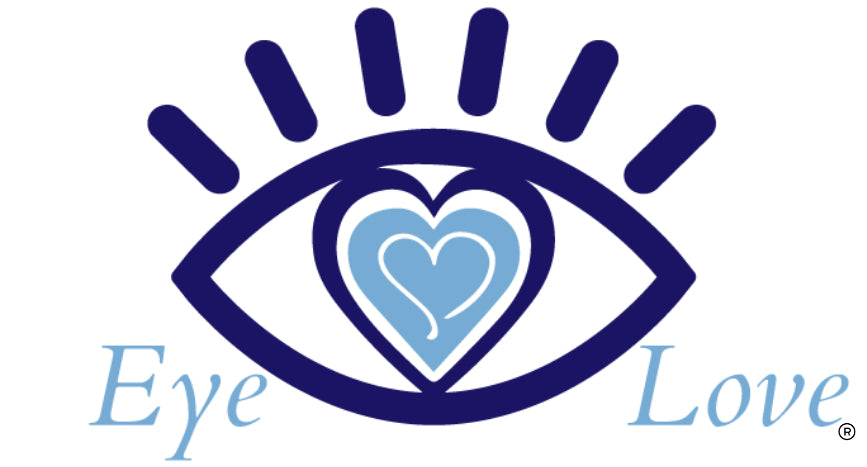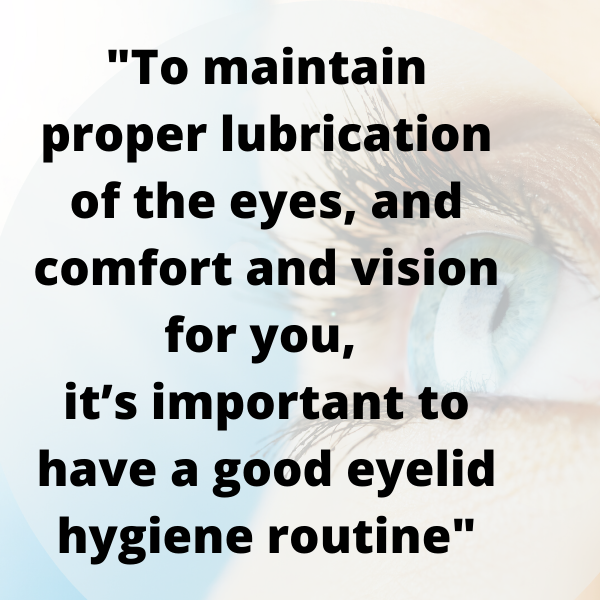7 Best Hygiene Tips for Blepharitis
What is Blepharitis?
If you’ve ever noticed crustiness or flaking on your eyelashes, you may be suffering from blepharitis, or eyelid inflammation. This condition can cause quite a few irritating symptoms. Aside from flaking and crustiness, you might notice overall redness and irritation of the eyes and eyelids, dryness, watering of the eyes, and even blurred vision.
This condition can affect both the front and the back of the eyelids. If it's anterior, the eyelashes will be much more involved. If it's posterior, the meibomian glands are likely involved. The back portion of the eyelids is where the meibomian glands reside, and these tiny sebaceous glands work to produce the oily portion of your tear film. When there is a dysfunction in this system, inflammation can occur. Other things that can contribute to inflamed eyelids include certain scalp and skin conditions and demodex eyelash mites.
The eyelids are so important for maintenance of healthy, comfortable eyes because of a few reasons. First of all, the tear film is composed of three layers; mucin produced by the goblet cells of the conjunctiva, aqueous produced by the lacrimal gland, and lipid or oil produced by the meibomian glands. Because the eyelids contain the meibomian glands, any harm to the eyelids could cause harm to the glands and therefore, lead to eye irritation.
The eyelids are also important because they help spread the tear film across the front of the eye. If the eyelids are not working properly, or even when you’re not blinking enough, the front of the eyes are not being properly coated with tears.
Whether you have anterior or posterior issues, the eyelids are involved. To maintain proper lubrication of the eyes, and comfort and vision for you, it’s important to have a good eyelid hygiene routine in place.
7 Best Eyelid Hygiene Tips for Blepharitis
1. Wash Your Hands
Maintaining proper overall hygiene is important because bacteria and viruses can spread easily. Since bacteria is one of the main causes of eyelid inflammation, you’ll want to make sure you’re washing your hands regularly. In fact, you likely touch your face hundreds of times per day. If you’re not washing your hands regularly, you risk spreading bacteria onto your eyelids and into your eyes.
2. Eye Makeup Removal
We see too many people who neglect to completely remove their makeup at the end of the day. First of all, not removing it is allowing chemicals to sit on your skin all night. This can increase irritation and make your eyes more sensitive. In addition to this, bacteria will begin to build up on your skin, eyelids, and eyelashes. By removing your makeup thoroughly, you help support your eyelid health. We recommend using an oil-based eye makeup remover because they usually contain fewer chemicals, and they work well to dissolve oily makeup.
If you prefer using eyelid wipes, which I know many do, we recommend the MediViz Tea Tree Eyelid Wipes.
3. Tea Tree Face Wash or Bar Soap
For all patients with inflamed eyelids, products containing tea tree essential oil can be helpful. We recommend washing your face with a tea tree foaming face wash and using a tea tree bar soap (or other minimal-ingredient tea tree soap) on the rest of your body.
4. Hypochlorous Acid Eyelid Cleanser
After washing your face, it’s important to clean your eyelids. Just like you brush your teeth every day to prevent cavities, cleansing your eyelids and eyelashes can go a long way in supporting the health of your lids and lashes. We recommend hypochlorous acid because this substance is made naturally by the body in response to microorganisms. It is a gentle cleanser containing minimal ingredients. This means less irritation for your sensitive eyelid skin. To use, simply spray the solution onto a cotton ball or round for application. There’s no need to rinse this solution off.
5. NuLids or BlephEx
When bacteria begin to build up on the eyelids, they form biofilm. This substance is tough to penetrate with cleansing alone, and it acts like a fortress to protect bacteria. To remove biofilm, there are a few things you can do. Many eye doctor’s offices have a BlephEx system. This device is used by your doctor to uncap the meibomian glands and remove biofilm to allow your glands to release oil like they should. If your doctor doesn’t offer BlephEx, you could use the NuLids device at home. This device works in a similar fashion, except you’re the one using the device. It’s recommended to use NuLids nightly for best results.
6. Warm Compress
After you’ve cleaned your eyelids and removed the biofilm, the next step is a warm compress. Because inflammation causes the oil within your meibomian glands to become stagnant and hardened, heating the oil may help it release more easily. Just like butter is hard when cold but liquid when warmed up, the same is true for your meibomian gland oils. Once they’re heated, they can be released into the tear film where they belong. Simply place a warm compress eye mask (we like this one with removable cover) in the microwave for 20 seconds and then lie it over your closed eyelids for 10-20 minutes.
7. Decrease inflammation with diet - Green Smoothies
Last but not least, we’re going to discuss what you’re eating. Most of you likely know that filling your day with processed food and excess sugar (think fast food, baked goods, and soda) isn’t doing you any favors. I’m here to tell you that it could be destroying your health, and it’s definitely contributing to some of the dryness and irritation you’re feeling.
However, we’re not going to ask you to remove anything you love right away. Actually, the easiest way to drastically improve your diet within a few weeks is to replace your breakfast with a green smoothie. By doing this, you’re flooding your body full of hydration, nutrients and antioxidants first thing in the morning. You’re also driving out all of the horrible breakfast food you may have been consuming before (pancakes, sugary cereal, bacon, sausage, dairy). Within a few weeks, you’ll likely notice more energy and hopefully more comfortable eyes as well. Click here to download and print our green smoothie chart.
What About Eyelid Wipes for Blepharitis?
If you’re someone who travels a lot, if you’re away from home a lot or you just prefer to cleanse your eyelids with a wipe, we’ve got a few great options for you.
1. Eyelid Wipes
Designed with inflamed eyelids in mind, using an eyelid wipe can be incredibly beneficial. The MediViz Eyelid Wipes work well to exfoliate and remove all dead skin cells and debris on the eyelids. They’re great for removing crustiness on the eyelashes as well.
2. Eyelid Wipes with Tea Tree Oil
If you know you suffer from demodex eyelash mites, choosing an eyelid wipe with tea tree oil is important. The MediViz Tea Tree Eyelid Wipes also provide nice exfoliation to the eyelids, and they’re easy to use and bring on-the-go.








